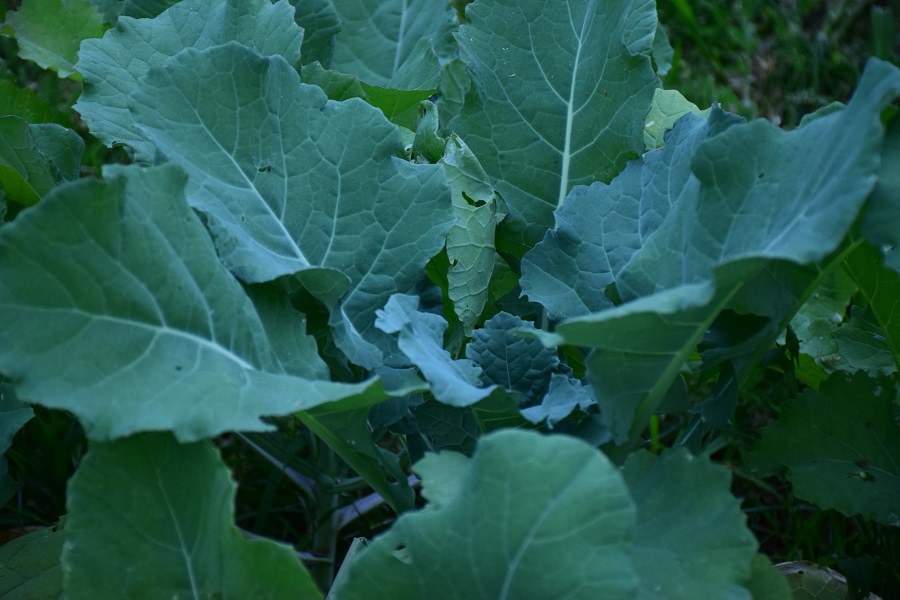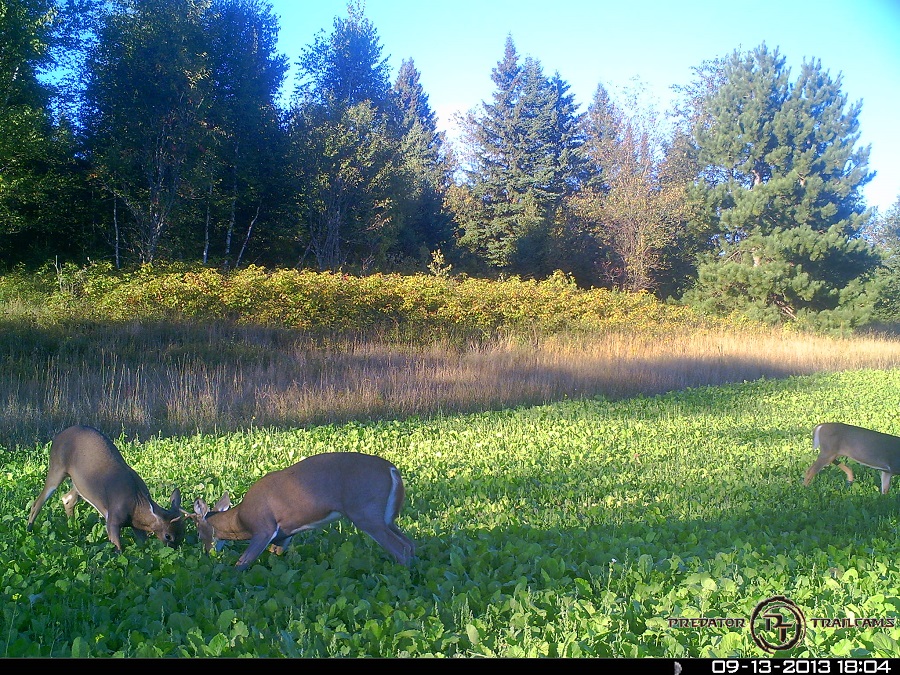Independence Day is behind us, summer is in full swing, and many of our farming and homesteading customers are getting ready to plant their fall cover crops and forage mixes. At the same time, our hunting customers are planning and prepping their fall attractant plots.
Brassicas like turnips, radishes, and kale are popular forages, cover crops, and attractant crops for the fall. As the temps drop into the single digits, the green leafy forage tops become sweet and succulent treats that deer and livestock simply can’t resist. Some brassicas also produce large roots that deer will dig up as the winter wears on.
Now is the time of year for most folks who intend to plant a fall crop to start buying seed and prepping those plots. We get a lot of questions from customers who want to know the difference between traditional brassica varieties (like purple top turnip or daikon radishes) and improved brassica varieties (like Winfred forage brassica or Sub Zero forage brassica). If that applies to you, read onward to learn more!
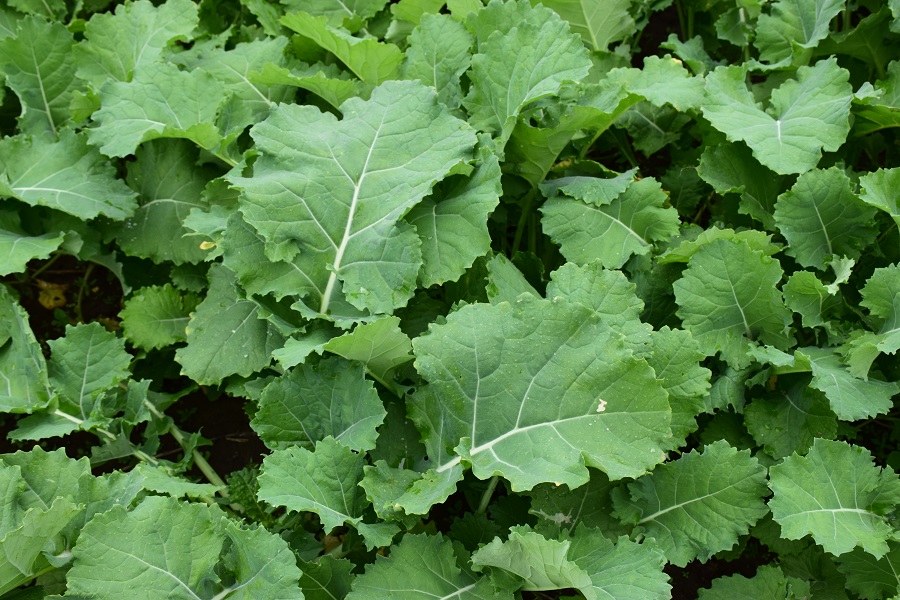
What are brassicas?
For the uninitiated, “brassicas” are plant species in the Brassicaceae plant family, otherwise known as the brassica or mustard family. Broccoli, cabbage, kale, kohlrabi, collards, brussels sprouts, turnips, and radish are some of the most well-known vegetables in the brassica family. Mustard and canola are well-known spice and oilseed crops in the same family. A common myth is that beets are also in the brassica family, but that is false! Beets are in an entirely different family (the Amaranthaceae family now, but formerly the Chenopodiaceae family).
If your childhood was anything like mine growing up, I’m quite sure you heard the phrase, “Eat your broccoli, it’s good for you!”. And just as brassica vegetables are good for humans, they’re great for animals. Protein-rich and high in minerals, brassica crops have great nutritional value for livestock. Long before they were used for wildlife food plot mixes, farmers were using brassica forage crops for their beef cattle and sheep, among other animals.
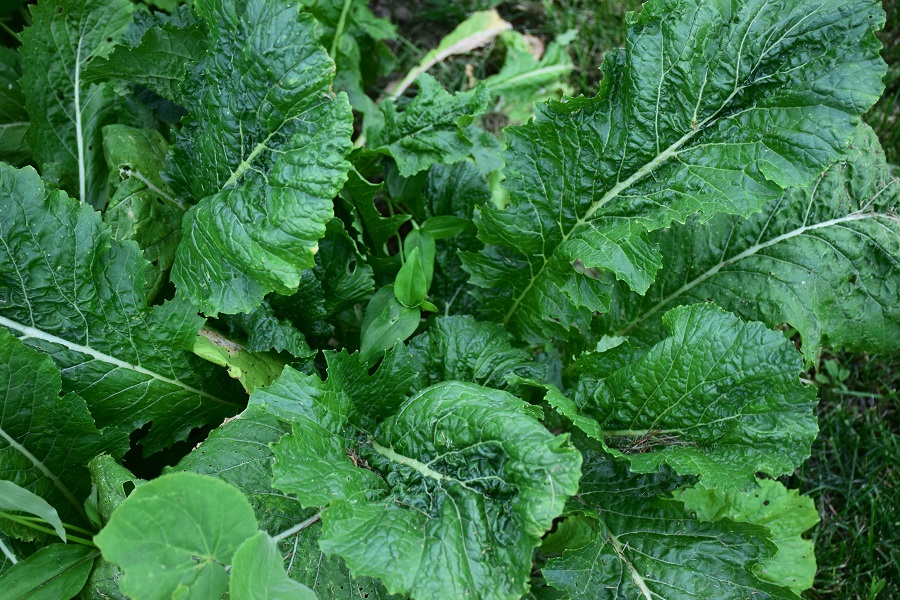
However, the real magic with brassicas happens after the first frost. Any deer, cow, or sheep worth its salt will learn very quickly that, after a frost, those brassica food plots are the #1 place to be! Brassicas are cold-weather crops and one of the reasons they do so well in colder temps is because of their ability to concentrate sugars in the cells of their aboveground plant parts in order to prevent those cells from freezing.
So, after a frost, the leaves and stems become much sweeter and tastier. It’s the same reason why a lot of gardeners will leave their cabbage, kale, and brussels sprouts in the garden a little longer in the fall – to try to take advantage of the sweetening that occurs after a frost! Brassicas will stay green and lush long into the fall and early winter, often remaining upright and bright-green down into the teens for temperatures.
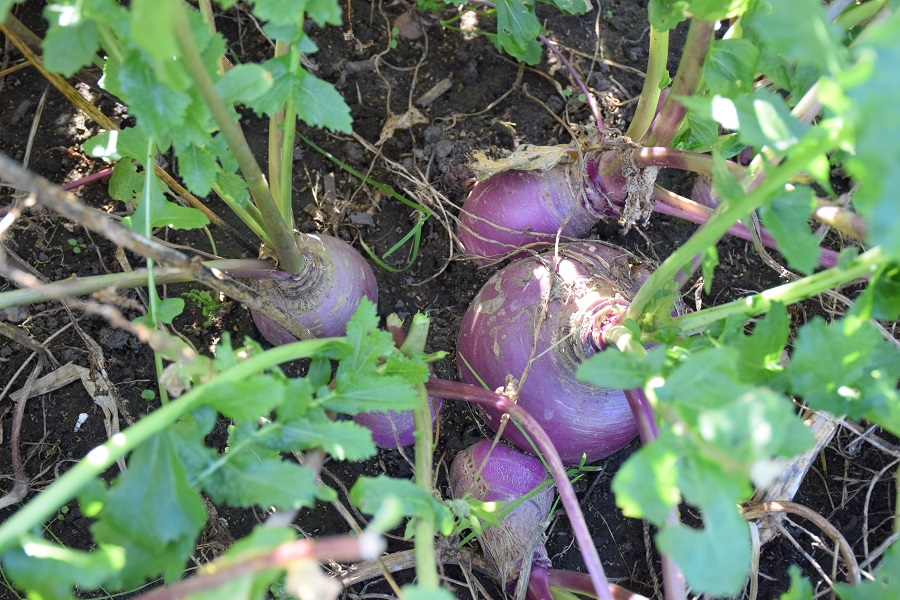
How are traditional brassica crops different from improved forage brassicas?
While all brassicas are related, traditional brassica crops that are used for foraging purposes (like kale, turnips, and radishes) were originally developed as vegetable crops meant for human consumption. It turns out that animals like them too (ask any gardener who has struggled with deer browse!).
Improved forage brassicas, on the other hand, were originally developed in New Zealand for sheep grazing. They come equipped with the great nutritional value of any brassica crop as well as an increased ability to handle foraging pressure. When forage brassicas are nipped low to the ground, they can bounce back by growing additional leaves, whereas turnips or radishes can fail if their growing point is destroyed before they’ve had a chance to form roots.
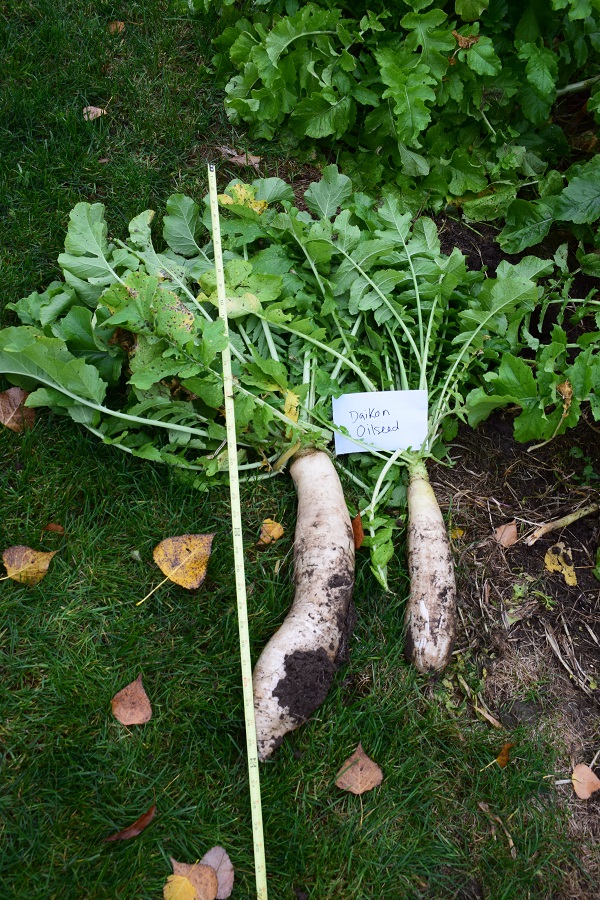
Does this mean I shouldn’t grow traditional brassica crops?
All brassicas have value in food plots and forage mixes – but it’s really best to mix them up so you can take advantage of their multiple strengths. If you don’t have a lot of browse pressure, then traditional brassicas (which are typically easier on the wallet) are perfectly fine.
For traditional brassica crops, we offer purple top turnip, daikon radish, kohlrabi, and rutabaga. These are all root crops, and while their leafy tops are very palatable to all animals, their true strength lies in their roots. Once winter hits, these roots are sweet and delectable and animals (especially deer!) will spend a good deal of time trying to dig them up and eat them. We also offer dwarf essex rapeseed, related to canola (and also a mustard), which is primarily meant as a leafy browse forage.
But if you find yourself dealing with heavy browse pressure, then it would be beneficial to include some improved forage brassicas in the mix. These improved forages will grow faster and taller (especially when soil test fertilizer recommendations are followed) and will protect your traditional root crops so they can grow good roots for late-winter browse.
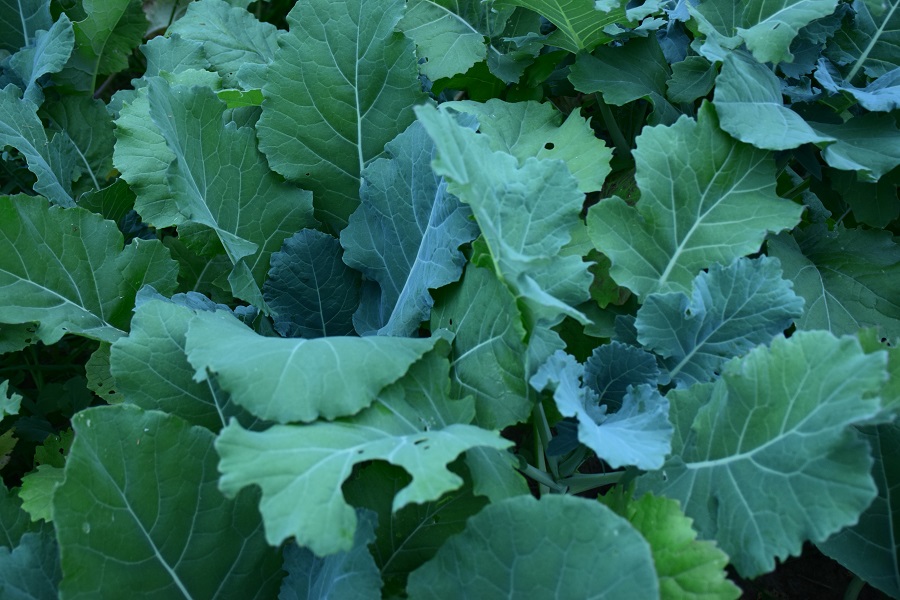
So, what kinds of improved forage brassicas does Deer Creek Seed offer?
We’re so glad you asked! Deer Creek Seed Co. offers both straight and blended brassica products. Our blended brassica mixes contain both improved forage brassicas and traditional brassica crops.
When deciding which improved brassica crop to go with, you should consider your food plot or foraging needs. First off, what kinds of animals are you trying to feed? After all, forage brassicas aren’t just for wildlife – cattle and sheep love them too. If you’re looking for livestock forage, our Rangi forage brassica, and Winfred forage brassica are great choices. Just remember to combine them with other roughage or grasses in order to prevent any digestive problems from such a nutrient dense crop.
While all of our forage brassicas are great for wildlife, some particular favorites for food plots include forage kale, Forage brassica, and Purple Top Turnip. The forage kale is a great forage crop that continues to produce leafy forage throughout the season. The Pacer forage turnip is impressive in that it can handle browse pressure on its leafy tops while still producing a delicious root that deer can go after in the winter (regular turnips will struggle to build root mass if they are continually browsed). And the Subzero forage brassica is impressive in its singular ability to survive multiple hard frosts, making it the hardiest of our improved forage brassicas!
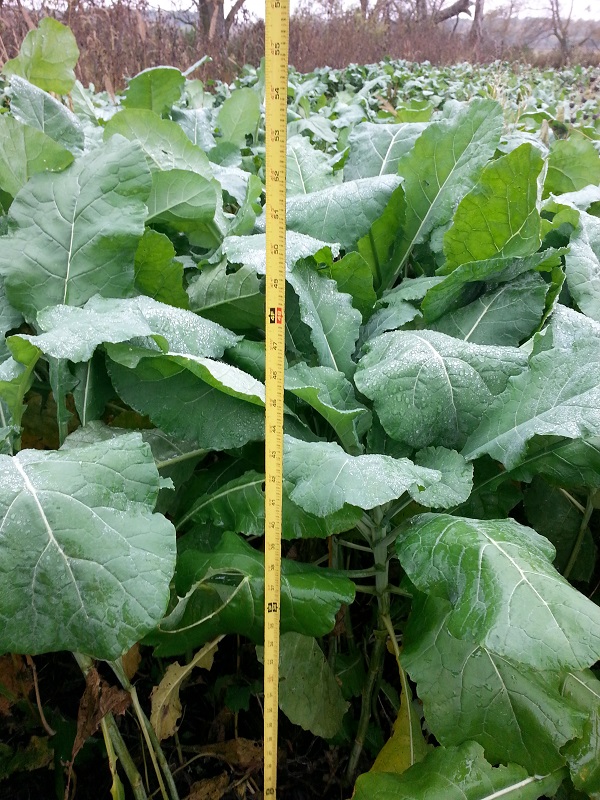
If you’re curious about our blended brassica products, we offer two mixes that are specifically focused on brassicas. Our Prime Time Brassica food plot mix and our Brassica Blend food plot mixes are balanced blends of leafy forages and succulent root crops with improved brassicas in each blend. If planted in late summer, their forage will reach peak production by mid-fall and they will outshine any other food plot crop once the temperatures drop below freezing.
Are there any downsides to brassicas?
Brassicas really are “all that and a bag of chips”! But they can’t be that perfect all the time, right? They’ve got to have some weaknesses, right?
In reality, they don’t have many. They’re small seeded so you can broadcast them, lightly cover them, roll them and you’re good to go. They handle cold temps and shorter daylight hours. They’re lush and quick-growing and build a lot of forage.
But! There’s always a “but”. If you’re planting brassicas for the first time in your area and you’re looking to attract deer, there’s a chance the deer won’t browse the plot at first. If the deer herd in your area is unfamiliar with brassicas, they may not have much interest in them until late winter, when they get desperate for browse options and they try the leaves. Then, oh yes then, they change their mind and you will have them all over your plots the following year.
But if this is your first time trying forage brassicas in your area, we recommend using one of our mixes that has a combination of crop species in it, including brassicas. Our Autumn Buffet or our Succulent Succotash food plot mixes are great combination, late-season blends that will do well in the fall and winter as attractant plots and will introduce your deer herd to brassicas the right way!
There isn’t a better time to get your brassicas than right now!
There you have it! Our swan song for brassicas couldn’t be sweeter if we tried. Whether you’re planning to use them for wildlife or livestock forage or as a combination forage/cover crop – now is the time to order them and prep your planting area.
If you have any other questions about these crops, please give our customer service line a call (877-247-3736) and one of our agronomists will be happy to assist you. Now get out there and start planting!



